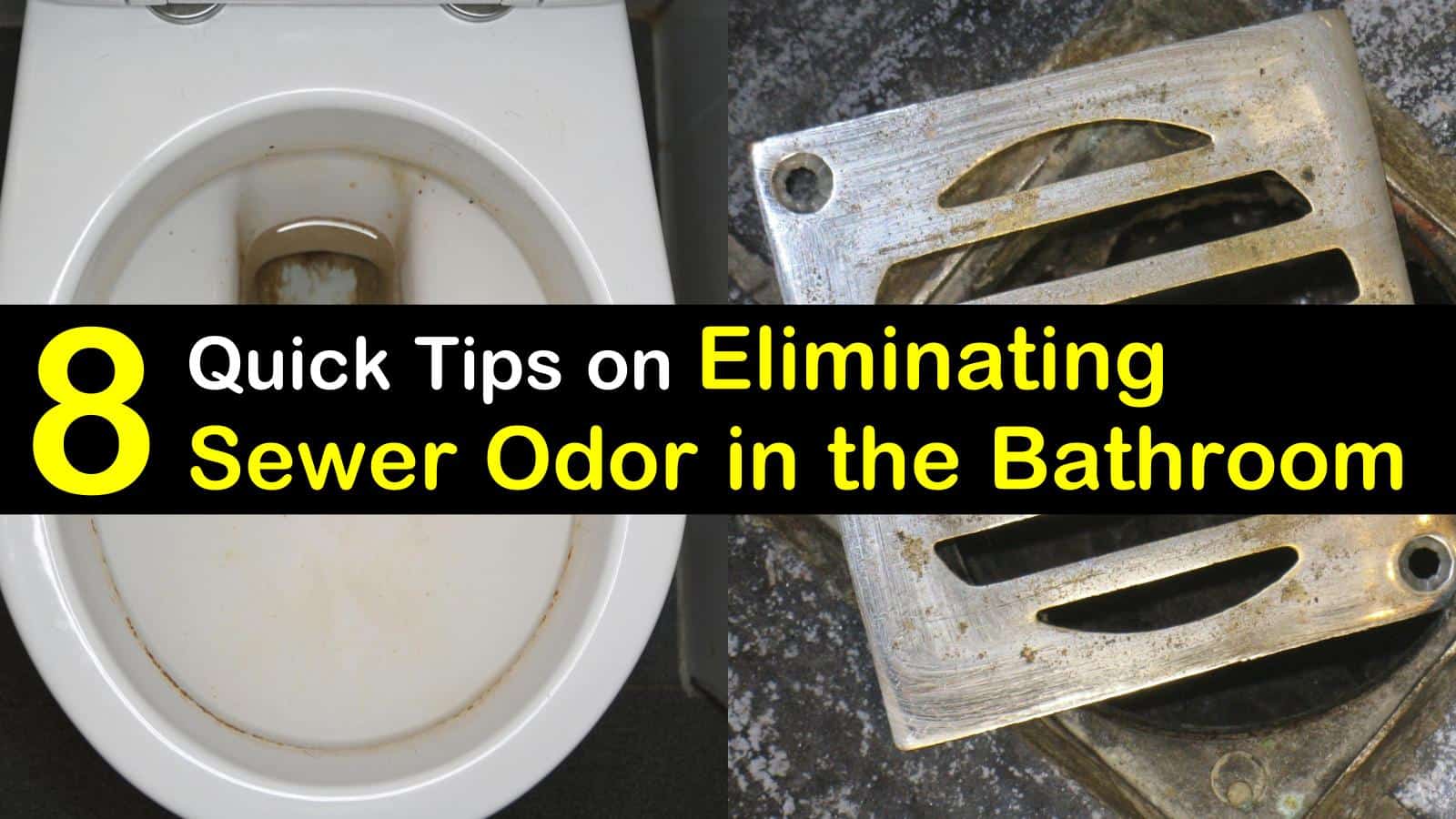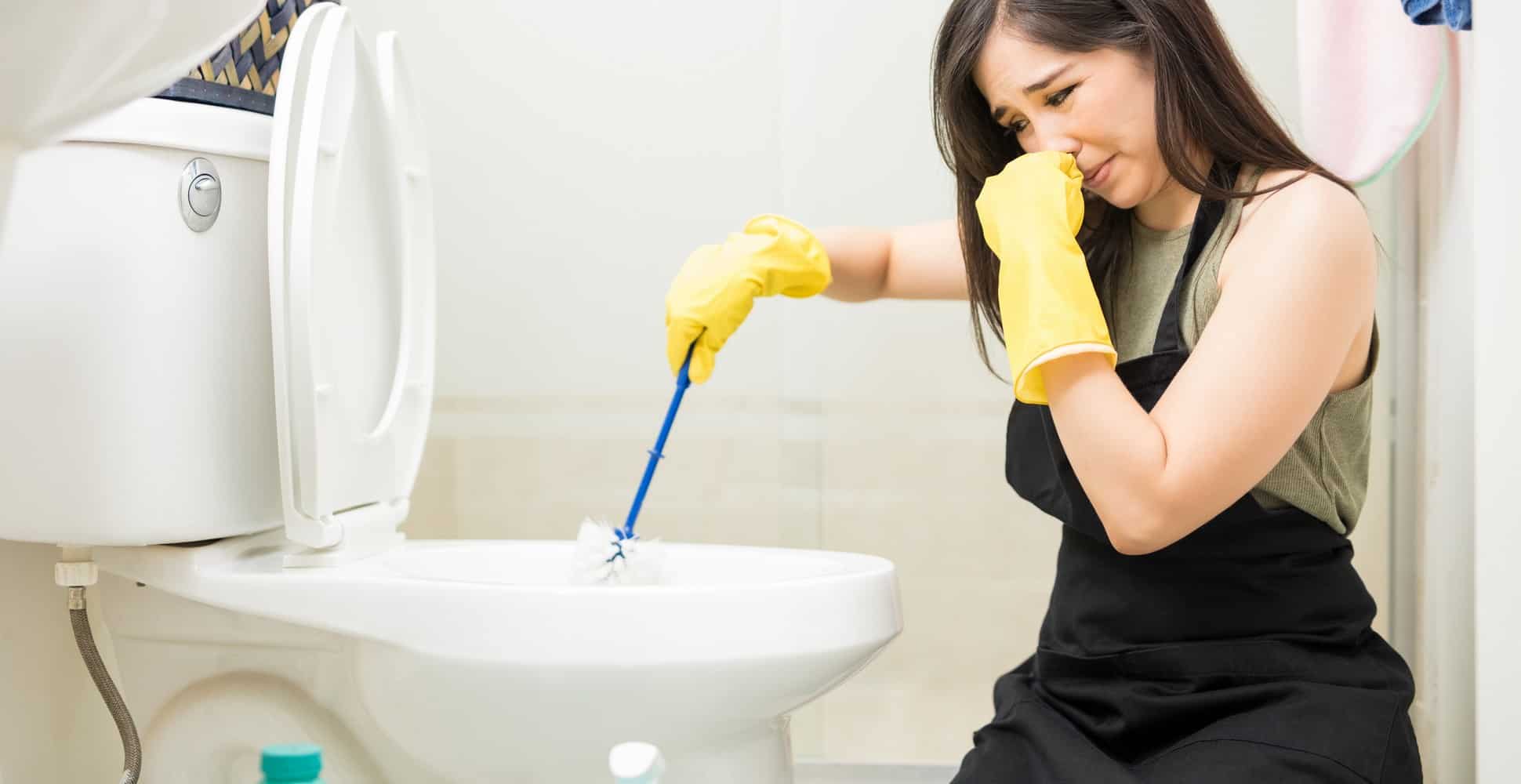Common Causes of Bathroom Odor After Toilet Replacement: Replaced Toilet Now Bathroom Smells

You’ve replaced your toilet, but the bathroom still smells? Don’t worry, this is a common problem, and there are several reasons why it might be happening. Here’s a breakdown of the most common causes:
Faulty Toilet Installation
A properly installed toilet is crucial for preventing odor issues. If the toilet is not installed correctly, it can lead to leaks and gaps that allow sewer gas to escape. This is particularly true for the wax ring, which acts as a seal between the toilet and the drainpipe. If the wax ring is not properly installed or damaged, it can allow sewer gas to leak into your bathroom.
Improper Sealing
Sealing is another important aspect of toilet installation. If the toilet flange (the part that connects the toilet to the drainpipe) is not properly sealed, sewer gas can leak into the bathroom. This is also true for the area around the toilet base, where the toilet meets the floor. If there are gaps or cracks, sewer gas can seep through.
Ventilation Issues
Proper ventilation is essential for preventing bathroom odors. Your bathroom should have a working exhaust fan that vents directly to the outside. This fan helps to remove moisture and odors from the bathroom, preventing them from building up. If the fan is not working properly or if the vent is blocked, odors can linger in the bathroom.
Sewage Gas Leaks
Sewage gas leaks are a common cause of bathroom odor. Sewer gas is a mixture of gases that are released from sewage systems. These gases can be harmful to your health, so it’s important to address leaks promptly.
How to Detect Sewage Gas Leaks
- Smell: The most obvious sign of a sewage gas leak is a foul odor, often described as smelling like rotten eggs. This smell is usually stronger around the toilet, but it can also be noticeable in other parts of the bathroom.
- Bubbles in the Toilet Bowl: If you see bubbles in the toilet bowl, especially when the toilet is not in use, this could indicate a leak in the sewer line. The bubbles are caused by sewer gas escaping into the toilet bowl.
- Water Pressure Issues: If you notice a decrease in water pressure, especially in the bathroom, this could also be a sign of a sewer gas leak. The leak can cause a buildup of pressure in the sewer line, which can affect water flow.
How Sewage Gas Leaks Occur
Sewage gas leaks can occur due to several reasons, including:
- Cracked or Broken Pipes: If the sewer pipes are cracked or broken, this can allow sewage gas to escape into the bathroom.
- Loose Connections: If the connections between the sewer pipes are loose, this can also allow sewage gas to escape.
- Blocked Drainpipes: If the drainpipes are blocked, this can create a buildup of pressure that can force sewage gas back up into the bathroom.
Troubleshooting Steps for Eliminating Bathroom Odor

Replaced toilet now bathroom smells – Now that you’ve replaced your toilet and addressed common causes of bathroom odor, let’s delve into practical troubleshooting steps to pinpoint and eliminate the lingering scent.
Checking for Leaks, Replaced toilet now bathroom smells
Leaks, even tiny ones, can contribute to persistent odor. Here’s how to check:
- Inspect the Toilet Base: Look for any moisture or discoloration around the toilet’s base, indicating a leak from the toilet bowl or tank.
- Examine the Floor: Check for wet spots or discoloration on the floor near the toilet, suggesting a leak from the supply line or drain pipe.
- Check the Toilet Tank: Run the toilet and listen for any unusual noises or sounds of running water. This could signal a leak within the tank.
Inspecting the Toilet Seal
The toilet seal, a rubber ring that prevents leaks between the toilet and the floor, can deteriorate over time. Here’s how to inspect it:
- Remove the Toilet Seat and Lid: Carefully lift the seat and lid to expose the toilet bowl.
- Check the Seal: Examine the seal for cracks, tears, or signs of wear and tear.
- Test the Seal: Flush the toilet and observe the seal for any movement or signs of leaking.
Evaluating Ventilation
Adequate ventilation is crucial for removing moisture and odors. Here’s how to assess your bathroom’s ventilation:
| Cause | Solution | Visual Aid |
|---|---|---|
| Insufficient Ventilation | Ensure your bathroom has a working exhaust fan. Run it for at least 15 minutes after showering or bathing to remove moisture and odors. | A diagram of a bathroom with a working exhaust fan above the shower or tub, with arrows indicating airflow. |
| Blocked Ventilation | Check for any obstructions in the exhaust fan’s vent, such as dust, debris, or a bird’s nest. Clean the vent and ensure it’s clear. | A diagram of a blocked exhaust fan vent, with a visual representation of the obstruction. |
Preventive Measures and Long-Term Solutions

A clean and fresh-smelling bathroom is essential for a comfortable living environment. While replacing a toilet can address some odor issues, taking proactive steps to prevent bathroom odor is crucial for long-term freshness. Proper installation, high-quality materials, and consistent hygiene practices are key to achieving this goal.
Proper Toilet Installation and High-Quality Materials
The installation process and the quality of materials used play a significant role in preventing bathroom odor. A poorly installed toilet can lead to leaks, creating a breeding ground for bacteria and unpleasant smells. Similarly, using low-quality materials can compromise the toilet’s functionality and contribute to odor problems.
- Professional Installation: Employing a qualified plumber for toilet installation ensures that the toilet is properly sealed and connected to the plumbing system, preventing leaks and odor buildup.
- High-Quality Toilet: Investing in a high-quality toilet with a reliable flushing mechanism and a robust design minimizes the risk of leaks and odor-producing clogs.
- Quality Wax Ring: The wax ring, a crucial component that seals the toilet to the floor, should be of high quality and properly installed to prevent leaks.
Bathroom Hygiene and Odor Prevention Techniques
Maintaining good bathroom hygiene is essential for preventing odor. Regular cleaning, proper ventilation, and the use of odor-eliminating products can significantly reduce the risk of unpleasant smells.
- Regular Cleaning: Clean the toilet bowl, seat, and surrounding area regularly with a toilet bowl cleaner and disinfectant. Pay attention to hard-to-reach areas like under the rim and around the base of the toilet.
- Ventilation: Ensure adequate ventilation in the bathroom by using a fan or opening a window. This helps to remove moisture and odors, creating a fresh environment.
- Air Freshener: Using a bathroom air freshener can help to mask unpleasant odors and create a pleasant aroma.
- Odor-Eliminating Products: Consider using odor-eliminating products, such as sprays, gels, or tablets, specifically designed to neutralize bathroom odors.
- Baking Soda: Baking soda is a natural odor absorber. Sprinkle a small amount of baking soda in the toilet bowl or drain to absorb unpleasant odors.
- Vinegar: Vinegar is a natural disinfectant and odor remover. Pour a cup of white vinegar into the toilet bowl and let it sit for 30 minutes before flushing.
Preventing Clogs and Odor
Clogged drains are a common source of bathroom odor. Regular maintenance and the use of appropriate products can prevent clogs and keep the bathroom smelling fresh.
- Avoid Flushing Non-Flushables: Do not flush anything other than toilet paper down the toilet. Items like wipes, paper towels, and feminine hygiene products can clog the drain and lead to odor.
- Drain Cleaner: Use a drain cleaner periodically to prevent clogs and eliminate odor-causing buildup.
- Hair Removal: Remove hair from the drain regularly to prevent clogs and odor.
